A Timeline Of The International Space Station
Mark Carreau Jen DiMascio Irene Klotz October 21, 2020
1984 Jan. 24
President Ronald Reagan announces midway through his third State of the Union Address: “America has always been greatest when we dared to be great. . . . Tonight, I am directing NASA to develop a permanently manned space station and to do it within a decade.” He directs NASA to invite other countries to participate, giving birth to Space Station Freedom.
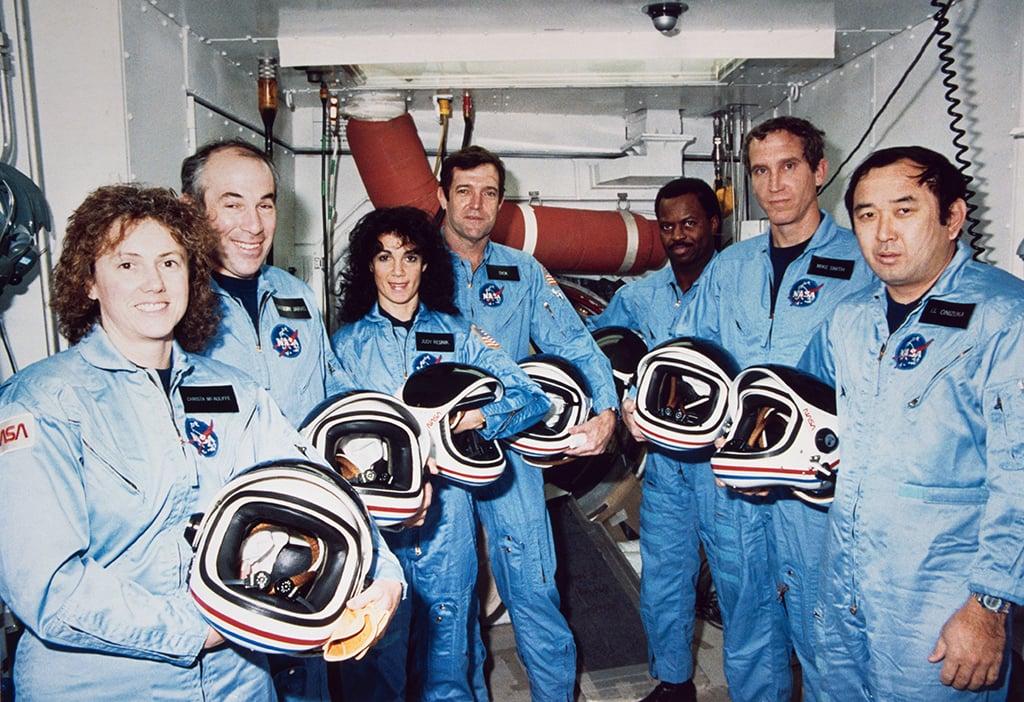
1986 Jan. 28
Space Shuttle Challenger breaks apart 73 sec. after liftoff on STS-51L, the program’s 25th mission, claiming the lives of seven astronauts. The fleet is grounded for 2.5 years, delaying Reagan’s goal of completing the station by 1994.
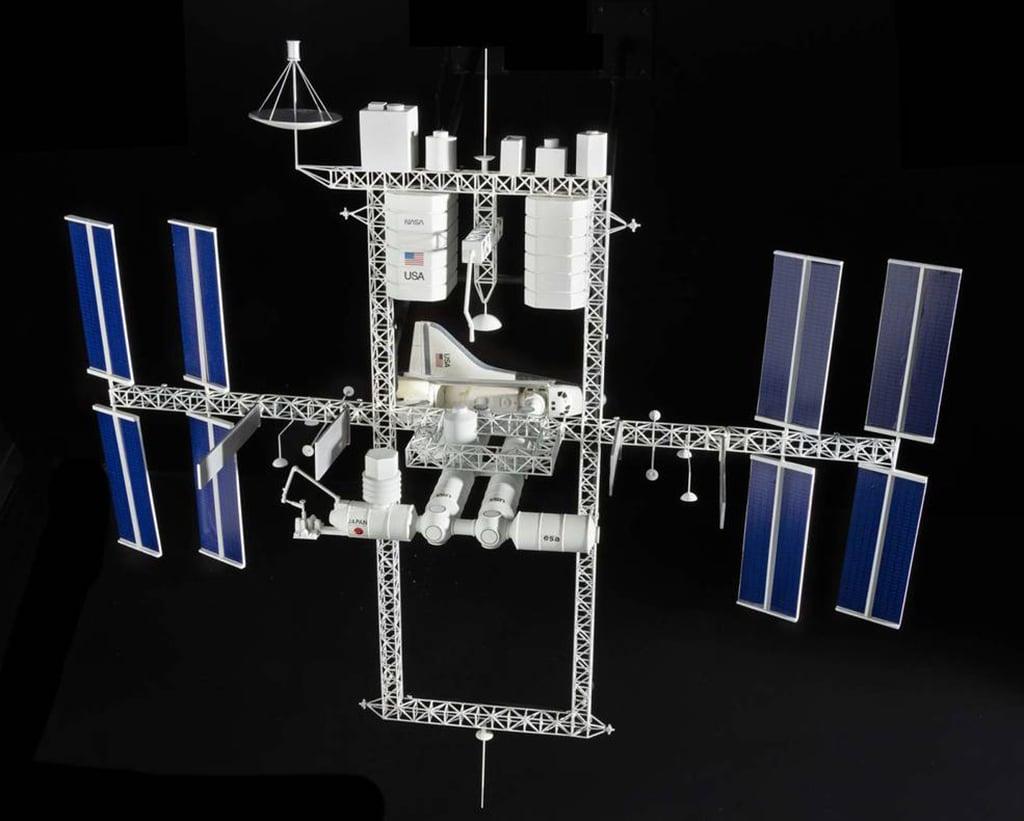
1989 July 20
On the 20th anniversary of the Apollo 11 Moon landing, President George H.W. Bush unveils the Space Exploration Initiative, calling on the U.S. to return to the Moon and eventually send explorers to Mars. The plan extends support for Space Station Freedom, but debate continues over its design, mission and cost.
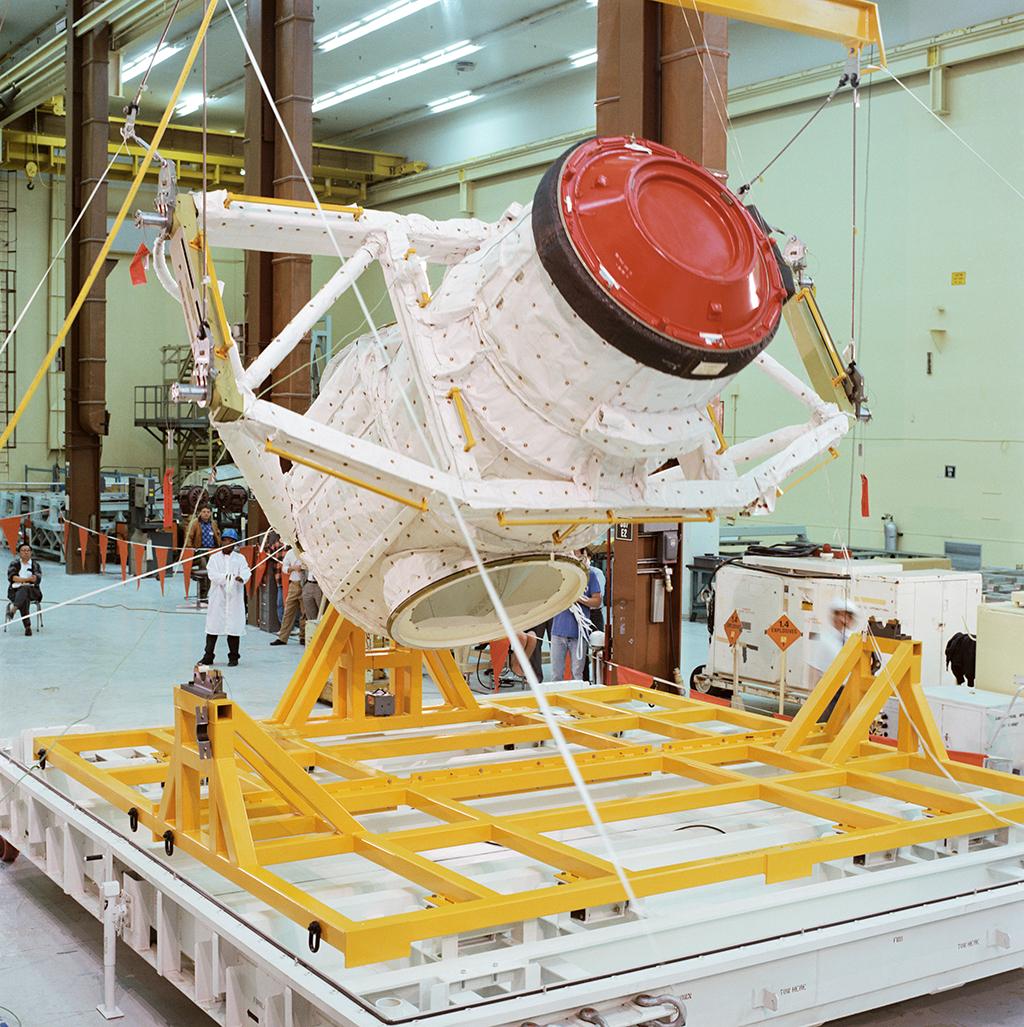
1991 Dec. 25
The Soviet Union collapses. Russia inherits the Soviet space program and seeks civil space partners for its programs, including the Mir space station, whose nine-year assembly began in early 1986. The U.S. and Russia kick off a new alliance with a series of astronaut-cosmonaut exchanges. First step: Figure out how to dock a space shuttle at Mir.
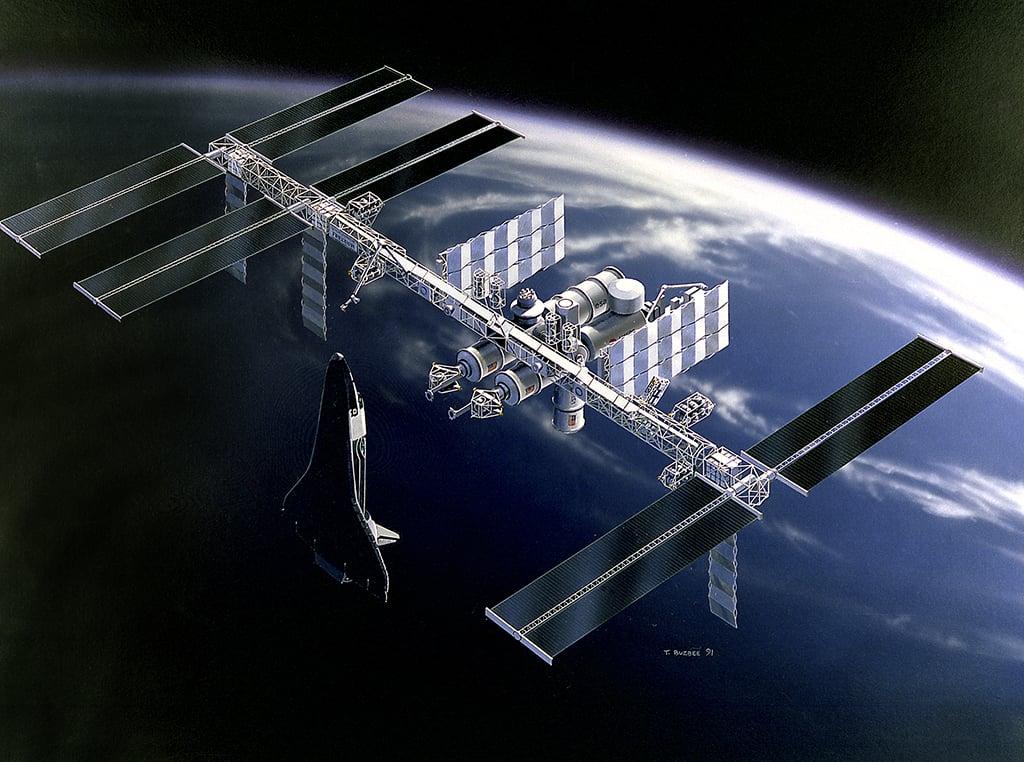
1993 June 23
An effort in the U.S. House of Representatives to terminate Space Station Freedom fails, 216-215; the late Rep. John Lewis (D-Ga.) casts the deciding vote. Despite NASA’s recovery from the Challenger tragedy and opportunities to cooperate with Russia and other nations in the aftermath of the Cold War, congressional support for the increasingly costly project is marginal during Bill Clinton’s presidency.
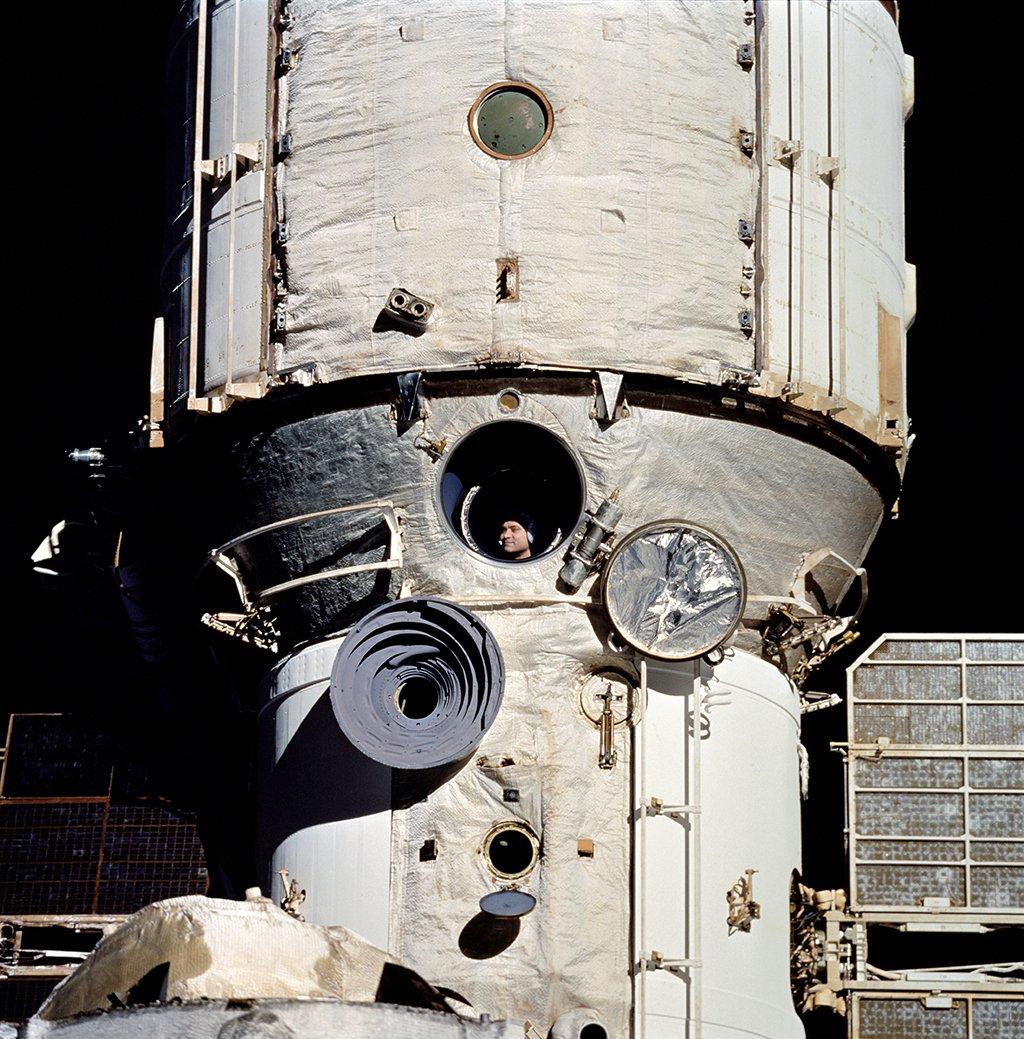
1993 October
Russia and NASA merge space station development efforts, leading to the first shuttle mission to rendezvous with Mir, in February 1994. Pictured aboard Mir is cosmonaut Valeri Polyakov.

1995 March 14
NASA launches physician Norman Thagard with two cosmonauts on the Soyuz TM-21 from the Baikonur Cosmodrome in Kazakhstan. He is the first of seven NASA astronauts who serve on Mir from March 1995 to June 1998, a difficult period of ISS design and development.
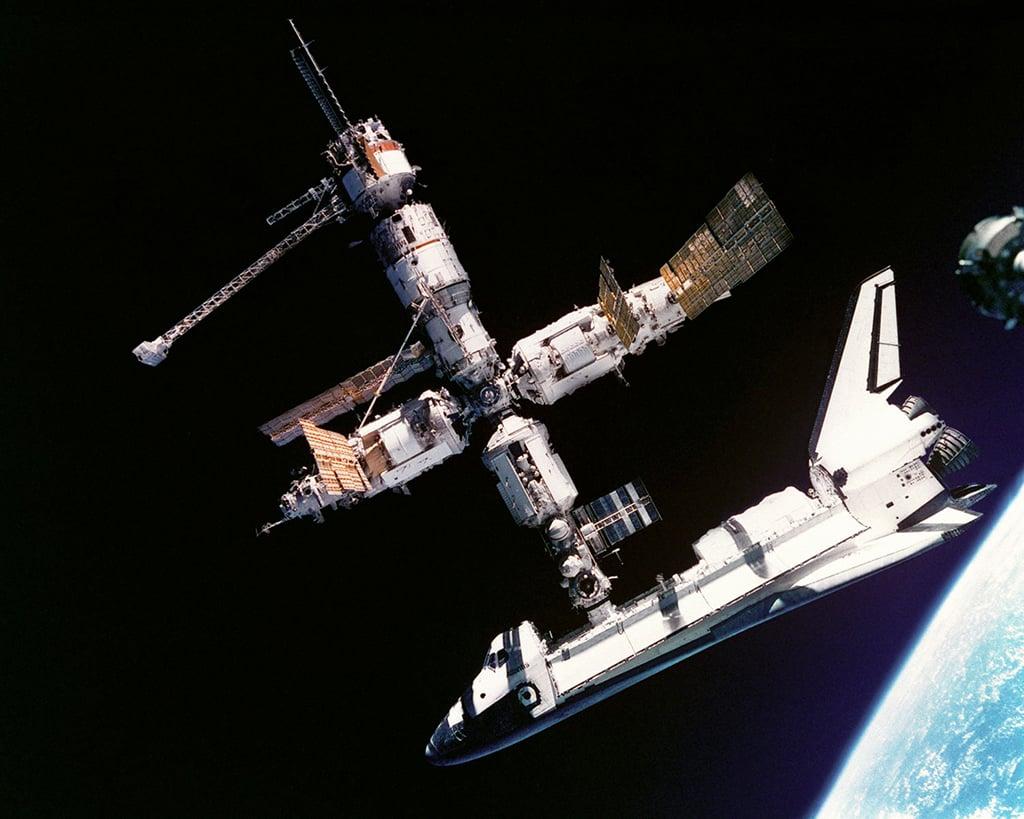
1995 June 19
The U.S. shuttle Atlantis, commanded by Robert “Hoot” Gibson, docks at Mir for the first time.
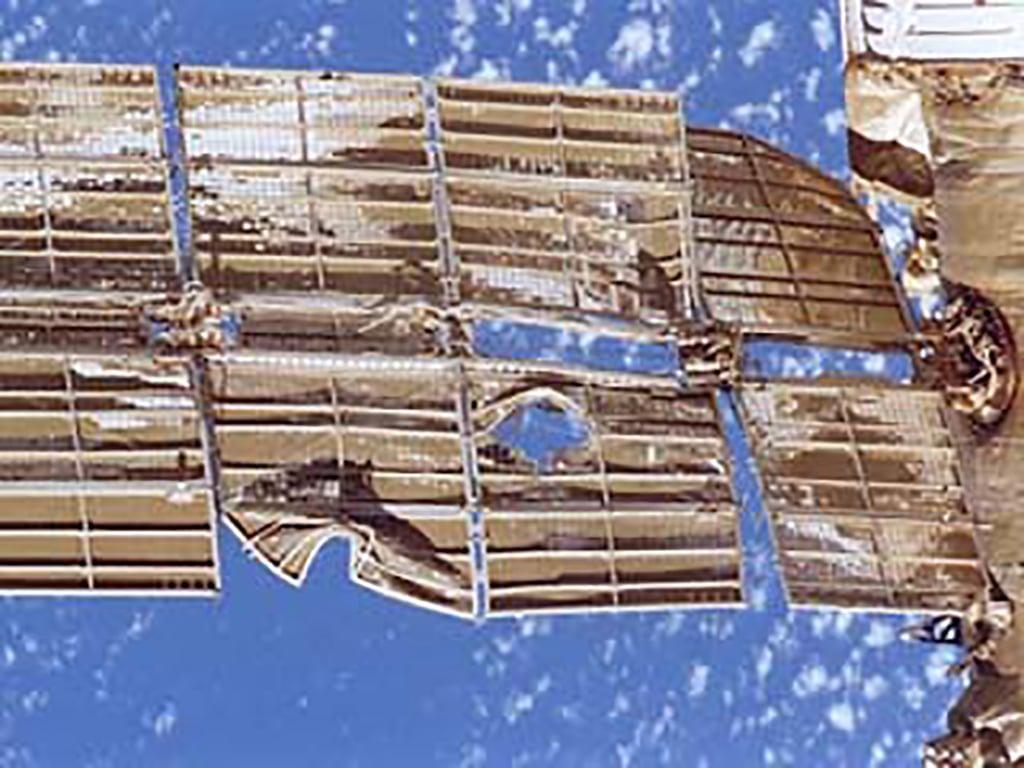
1997 June 26
Mir is struck by an unmanned, automated Progress cargo-vessel docking rehearsal, damaging a solar array and causing a dangerous depressurization, a reminder of the hazards of spaceflight. NASA astronaut Michael Foale joins cosmonauts for spacewalk repairs during his 145-day stay at the station. Mir is deorbited in March 2001.
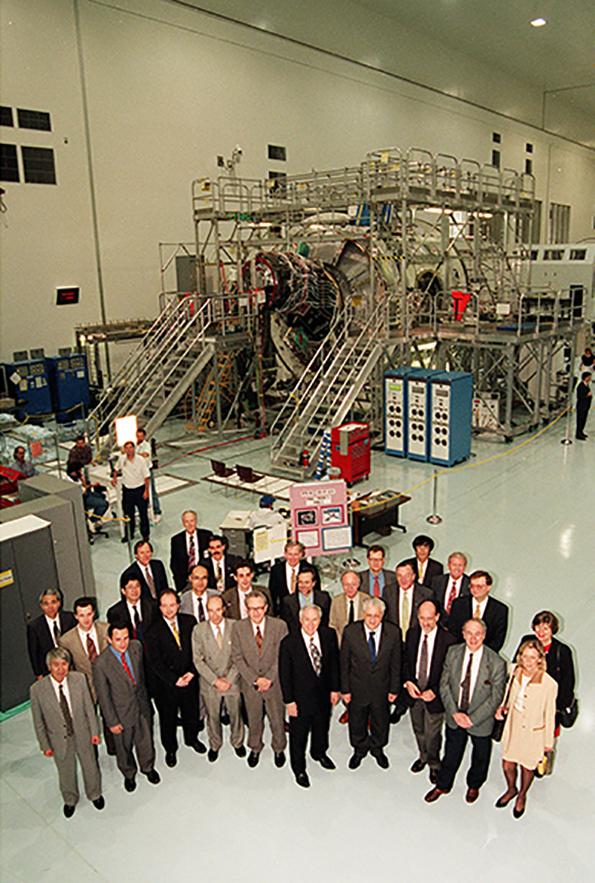
1998 Jan. 29
NASA gathers high-ranking officials from 15 nations in Washington to sign agreements for the design, development, operation and utilization of the ISS.
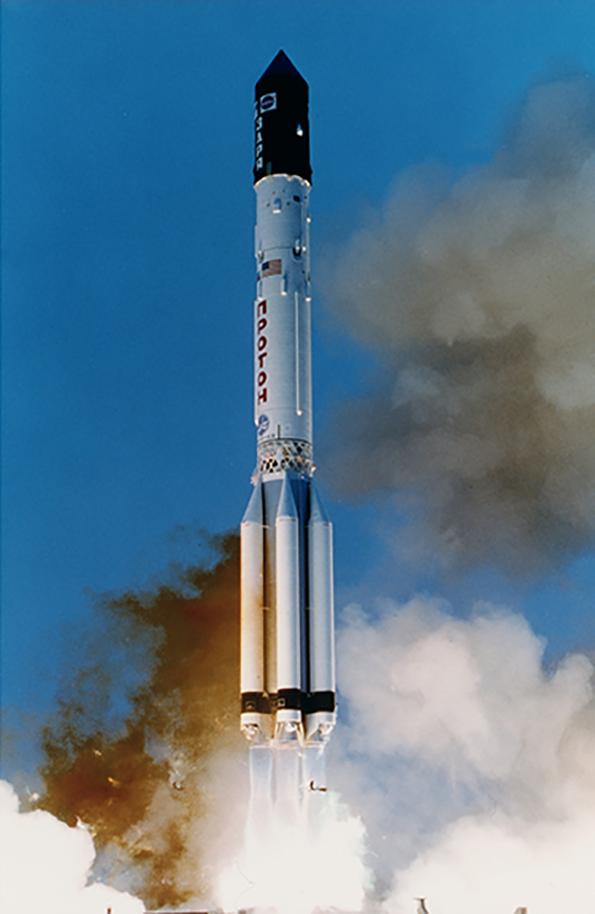
1998 Nov. 20
Russia launches Zarya, the first ISS element. Russia builds the functional cargo block, though NASA funds it.
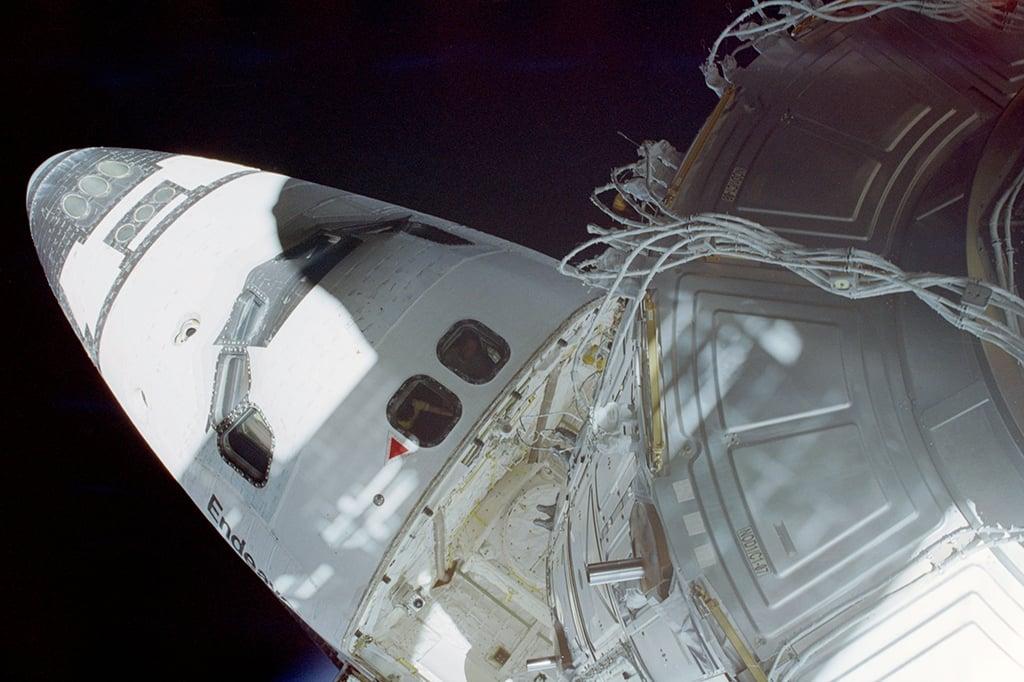
1998 Dec. 4
NASA launches the first U.S.-manufactured ISS element, Unity, aboard the shuttle Endeavour. Unity serves as the link between the U.S. and Russian ISS segments.
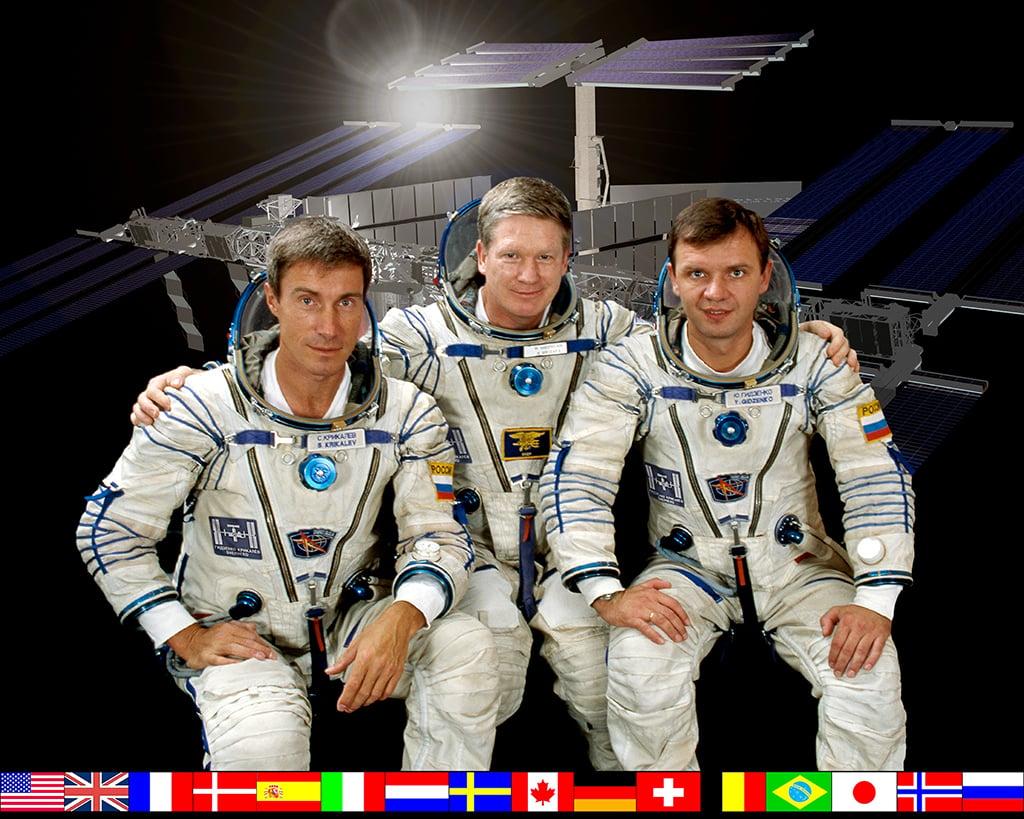
2000 Nov. 2
The first ISS crew—NASA astronaut Bill Shepherd, commander (center), and cosmonauts Sergei Krikalev (left) and Yuri Gidzenko (right)—arrive aboard a Russian Soyuz capsule. They return to Earth aboard the shuttle Discovery after a 141-day mission. Shepherd urges the ISS partnership to develop onboard hand tools and strategies that crews could use for repairs and maintenance rather than sending troubled hardware back to Earth. Sixteen years later, Made in Space activates its Additive Manufacturing Facility on the ISS for the commercial 3D production of hand tools and parts.
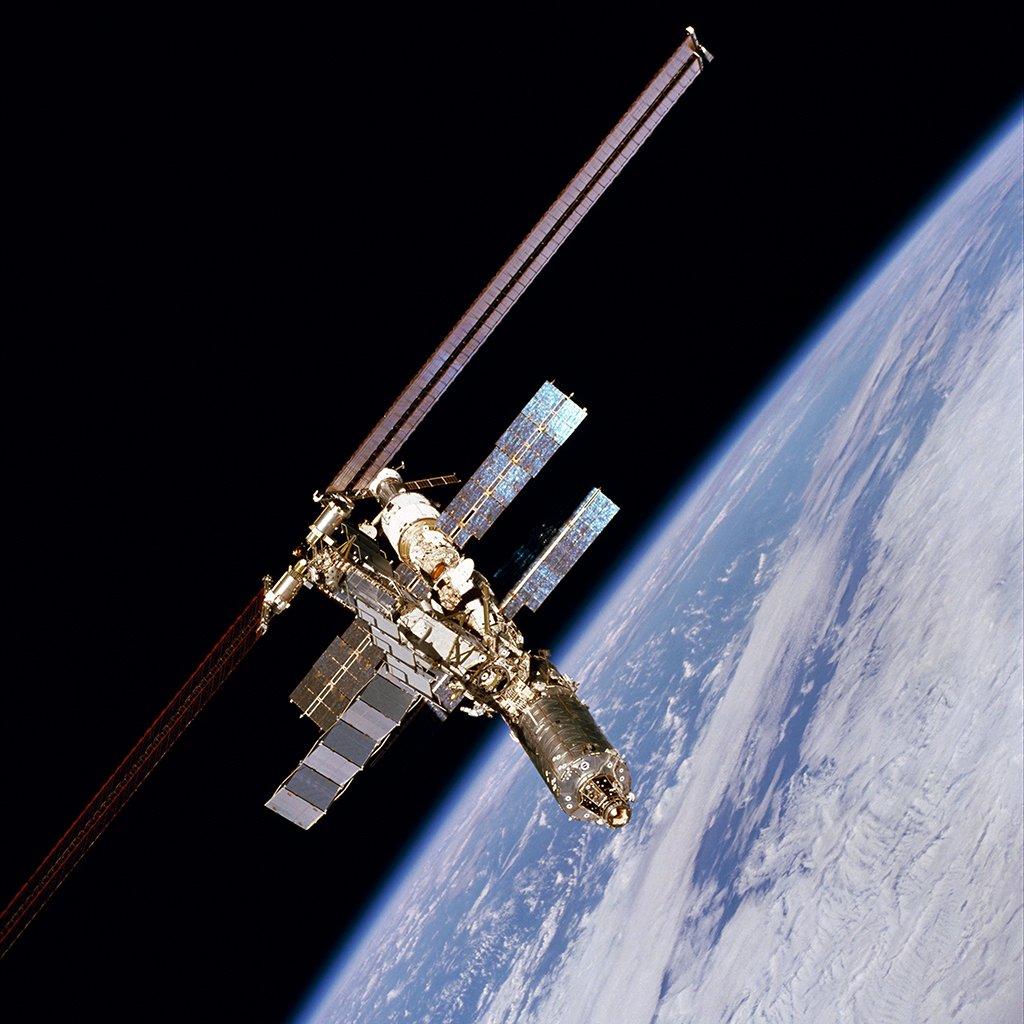
2001 Feb. 7
The U.S. Destiny Laboratory module, the home for most ISS research, lifts off on STS-98 aboard the shuttle Atlantis.
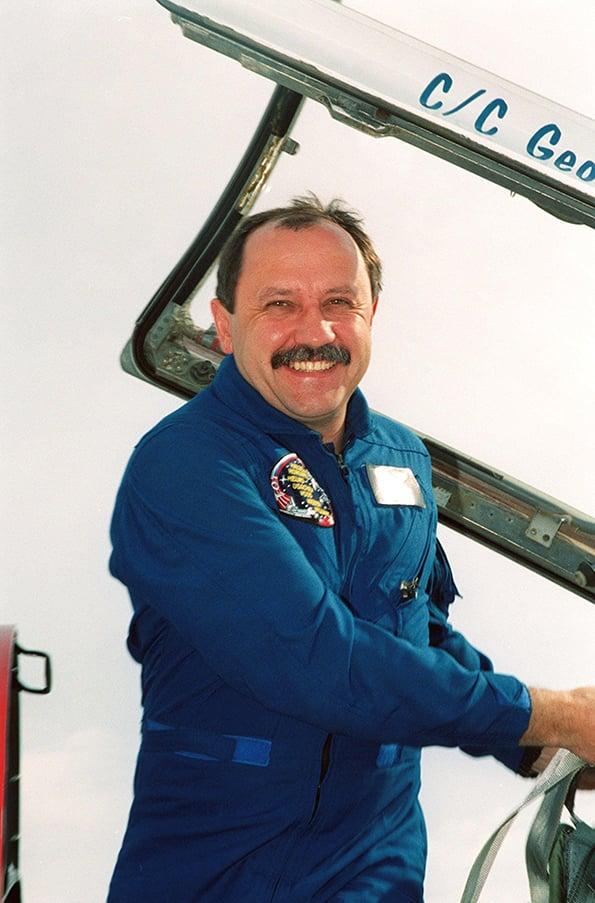
2001 March 19
Cosmonaut Yury Usachev becomes the first Russian to assume command of the ISS.
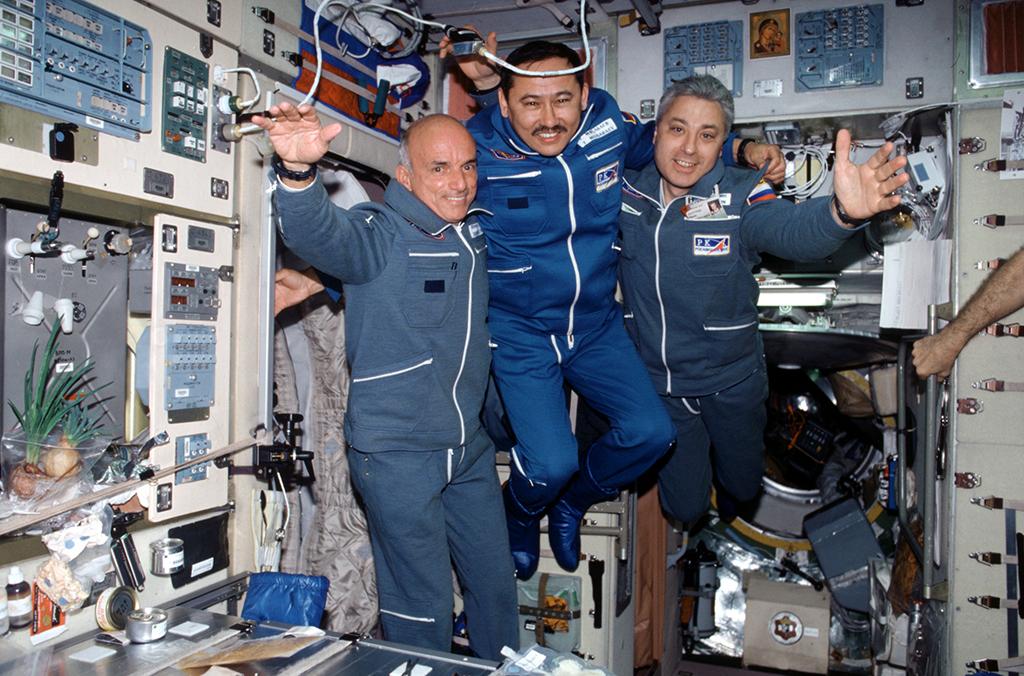
2001 April 28
Dennis Tito (left), an American aerospace engineer and financier, becomes the first private space tourist, paying Russia $20 million through an agreement with Space Adventures.
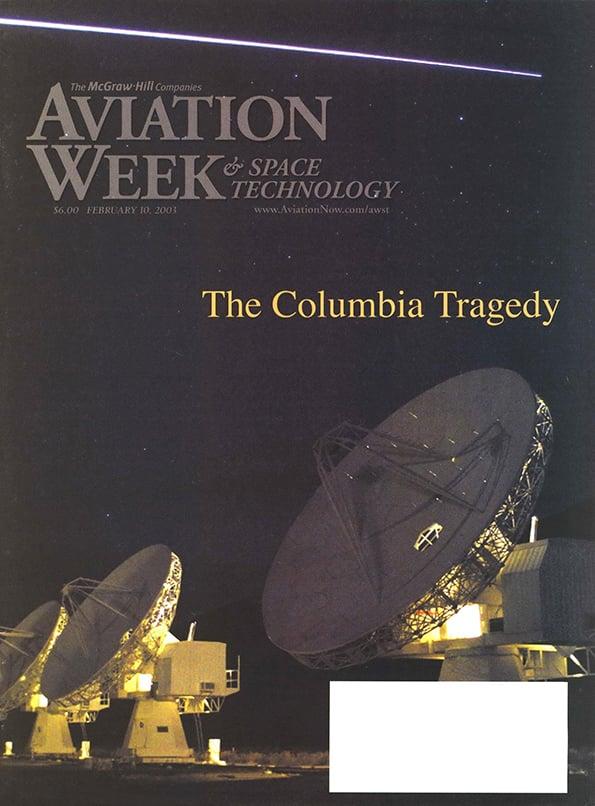
2003 Feb. 1
Seven astronauts on the STS-107 space shuttle mission perish when the orbiter Columbia breaks apart during descent back to Earth, following a 16-day orbital science mission intended to enhance ISS-style research plans. The tragedy renews a discussion about the space shuttle’s future and disrupts ISS assembly.
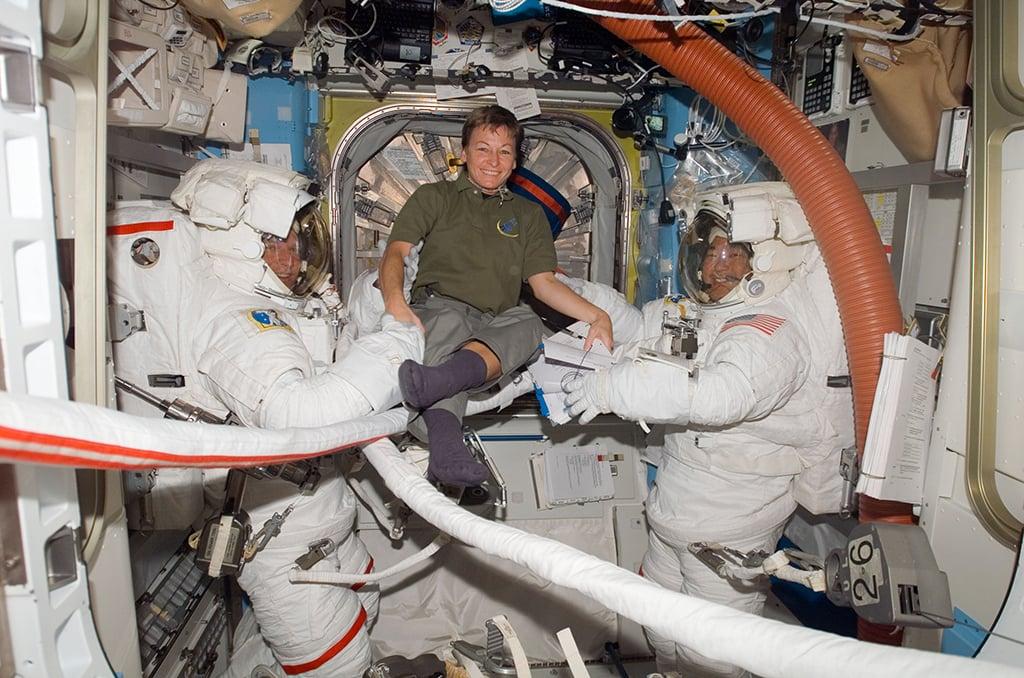
2007 Oct. 12
NASA astronaut Peggy Whitson, a biochemist, becomes the first woman to serve as commander of the ISS.
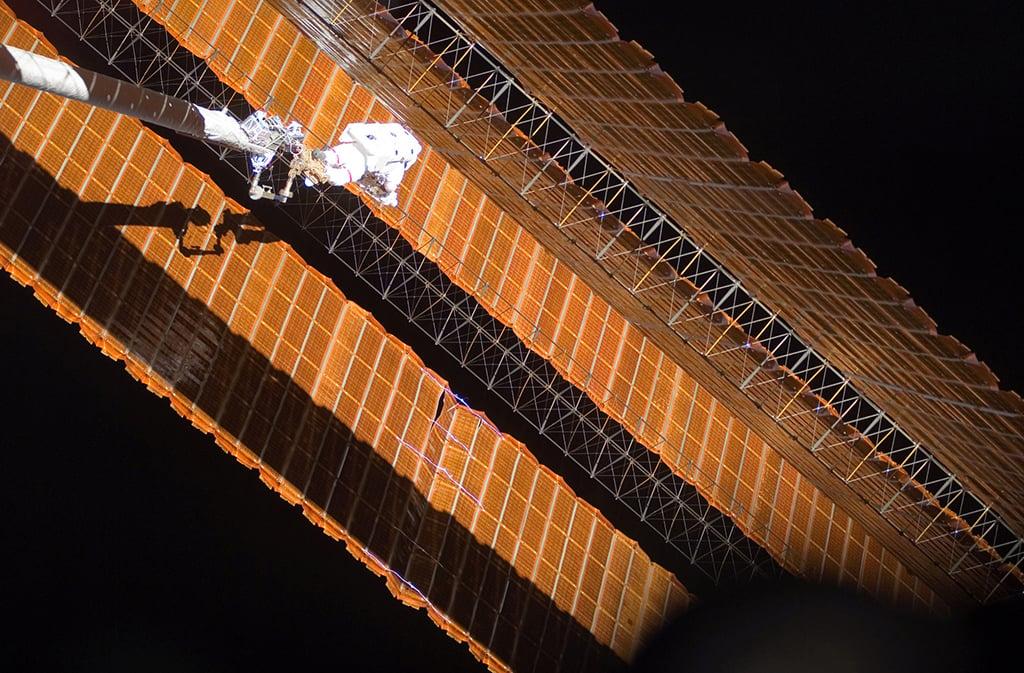
2007 Oct. 23
After delivering, via the shuttle Discovery, and installing the U.S. segment Harmony module, the STS-120 crew, commanded by Pamela Melroy, turns to the relocation of the station’s initial solar truss module. The first solar array module, initially designated Z-1, was installed in a vertical configuration. As the STS-120 crew transfers the module, now designated P-6, to the far port side of the ISS, the lengthy fabric solar array is retracted. A tear in the solar blanket appears as it is redeployed. Discovery astronauts Scott Parazynski, an emergency room physician and mountaineer, and Douglas Wheelock, a U.S. Army test pilot, conduct a 7-hr. 19-min. spacewalk on Nov. 3 to repair the tear.
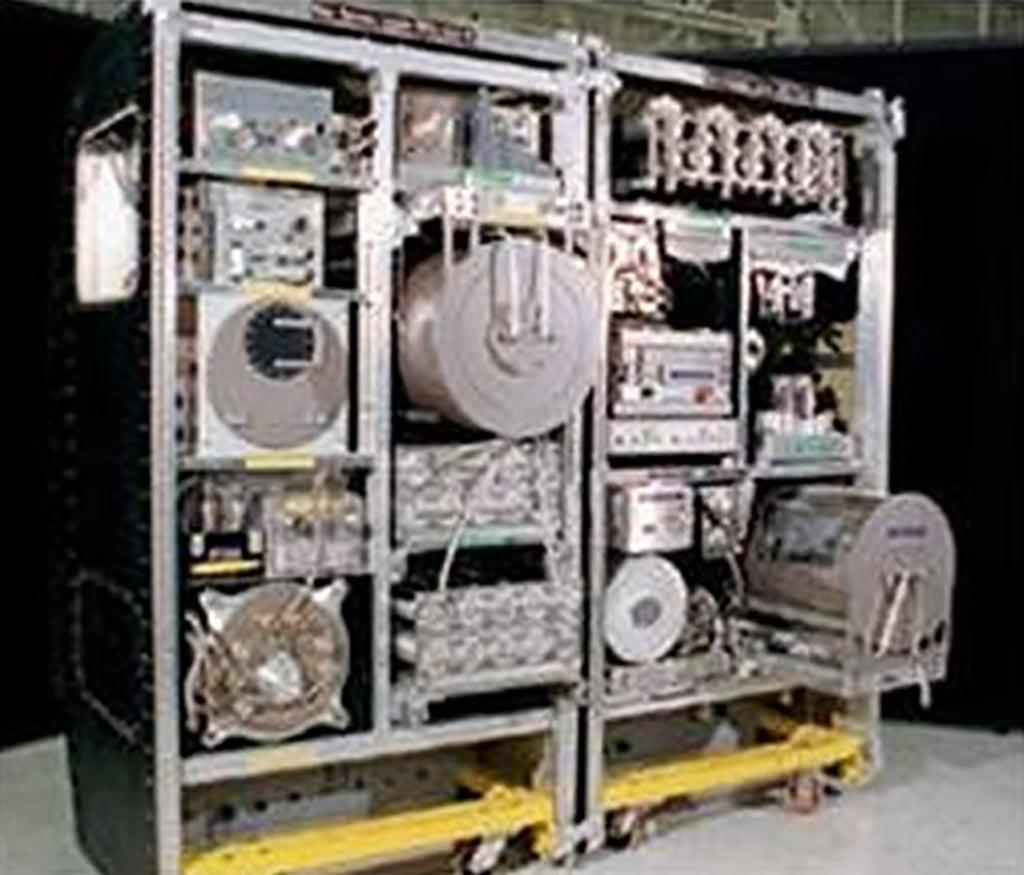
2008 Nov. 14
NASA’s Water Recovery and Management System lifts off aboard the shuttle Endeavour on STS-126 for installation in the ISS’s U.S. Tranquility module for the recycling and purification of wastewater, including astronaut urine and sweat, as a technology demonstration. Ninety percent of the wastewater is recycled, lowering resupply needs and providing a technology for future human deep space exploration.
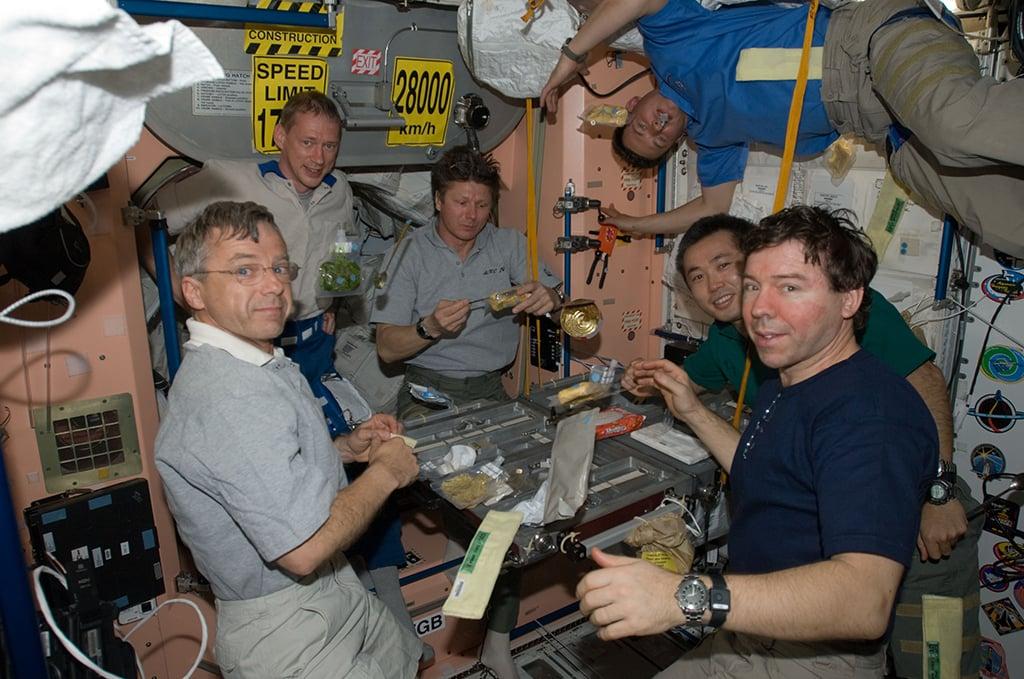
2009 May 29
The ISS long-duration crew increases from three to six astronauts and cosmonauts for the first time, with the docking of Russia’s Soyuz TMA-15. The crew of Expedition 20 includes (clockwise from left) Canadian Robert Thirsk, European Space Agency (ESA) astronaut Frank De Winne, both flight engineers; cosmonaut and commander Gennady Padalka; cosmonaut Roman Romanenko; Japan Aerospace Exploration Agency astronaut Koichi Wakata; and NASA astronaut Michael Barratt. DeWinne, of Belgium, later becomes the first ESA astronaut to command the ISS.
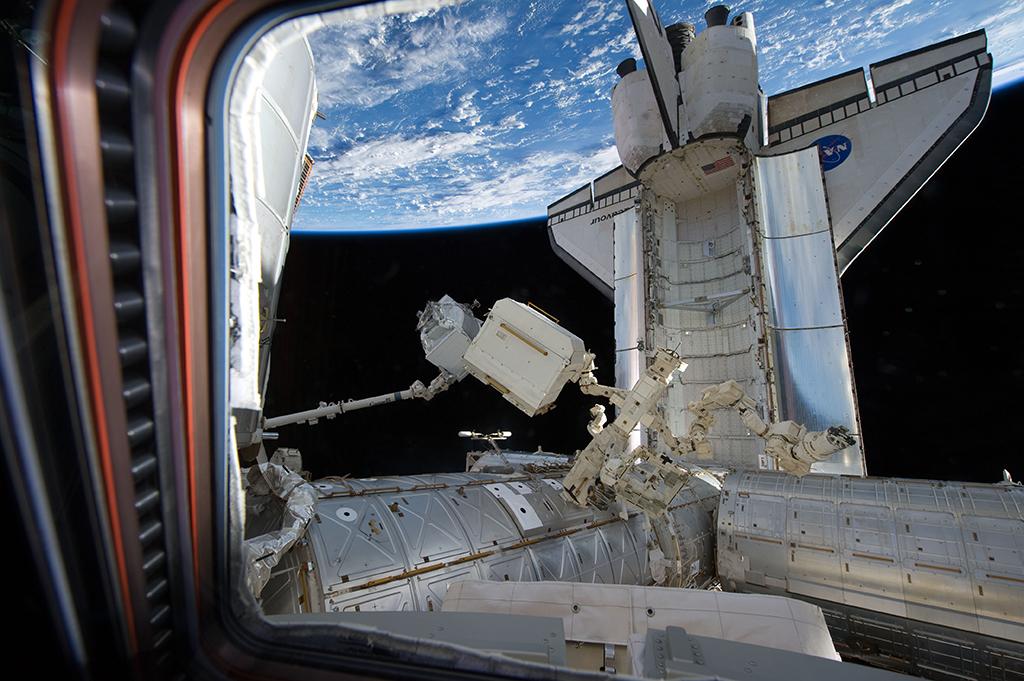
2011 May 16
The shuttle Endeavour launches on STS-134, a 16-day mission with six astronauts, to deliver and install the Alpha Magnetic Spectrometer (AMS) on the ISS solar power truss. Led by the U.S. Department of Energy with partnerships from institutions in 16 countries, the AMS was developed to seek out antimatter and dark matter and assess their influence on the evolution of the universe.
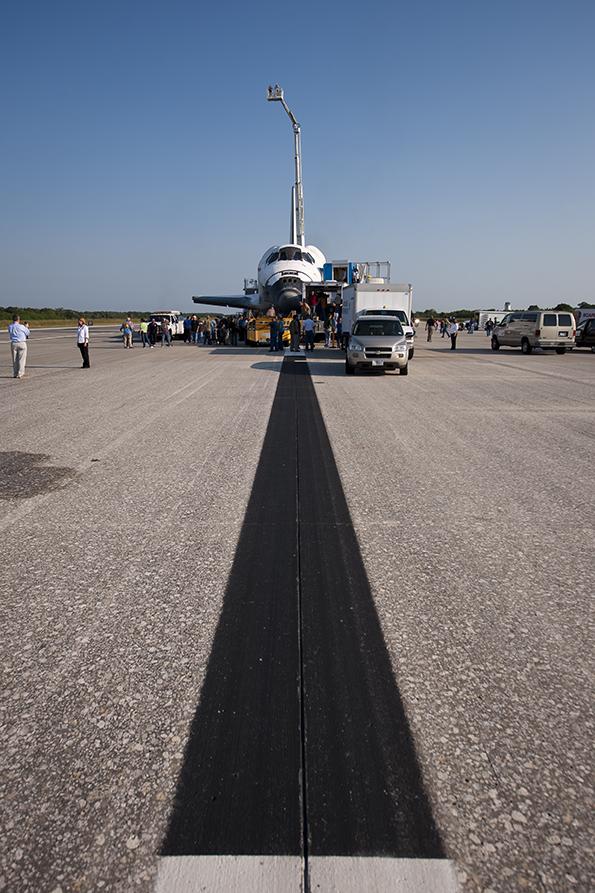
2011 July 21
NASA’s 30-year space shuttle program comes to a close, as Atlantis and its STS-135 crew of four, commanded by Chris Ferguson, touch down at NASA’s Kennedy Space Center after a mission to deliver the Raffaello multipurpose module, spare parts and crew supplies to the ISS. In all, 37 shuttle missions participate in the assembly and resupply of the ISS and crew exchanges. NASA now becomes dependent on Russia for ISS crew launches.
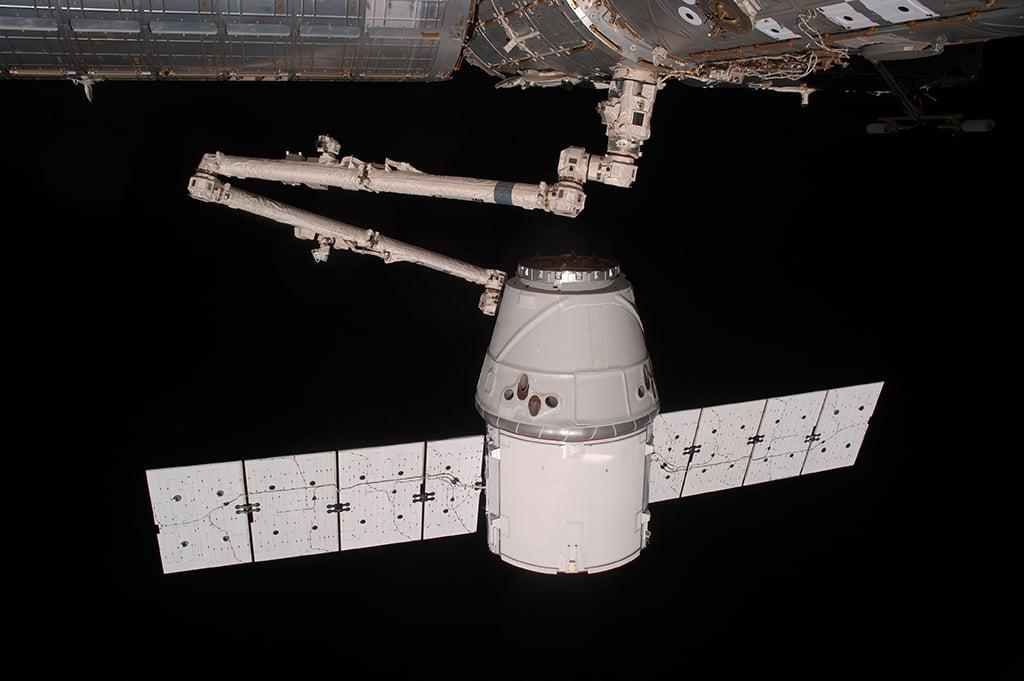
2012 May 25
A SpaceX Dragon capsule becomes the first commercial spacecraft to reach the ISS, a demonstration of commercially provided ISS cargo resupply services. A second supply line, operated by Orbital Sciences (since acquired by Northrop Grumman), begins flying in September 2013. The fleet is due to expand again in 2021 with Sierra Nevada Corp.’s Dream Chaser spaceplane.
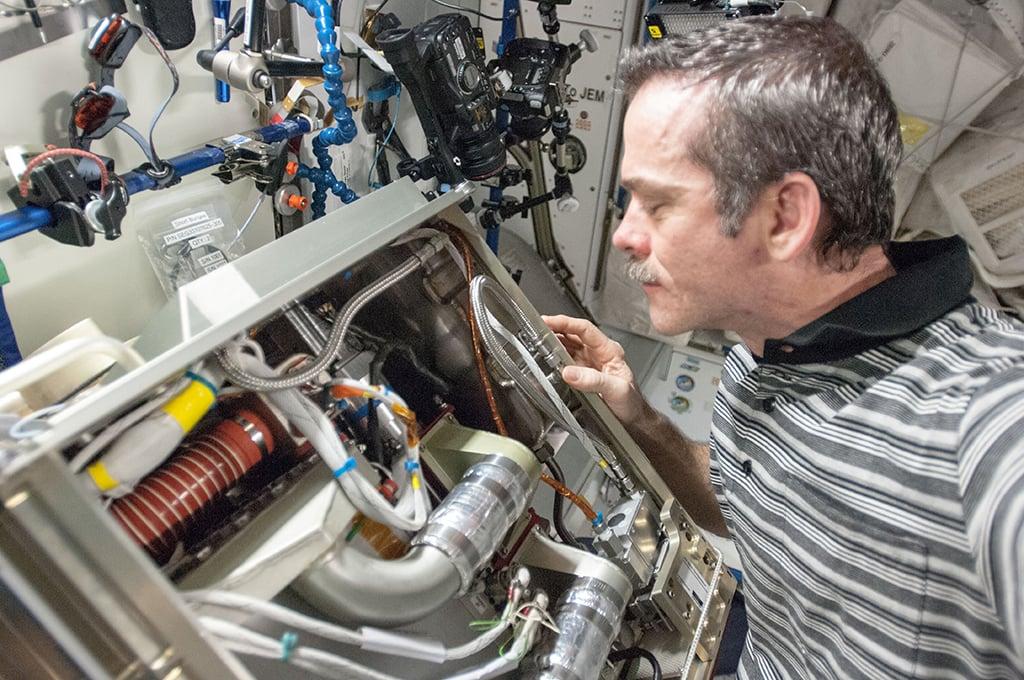
2013 March 13
Chris Hadfield becomes the first Canadian to serve as ISS commander with the start of Expedition 35.
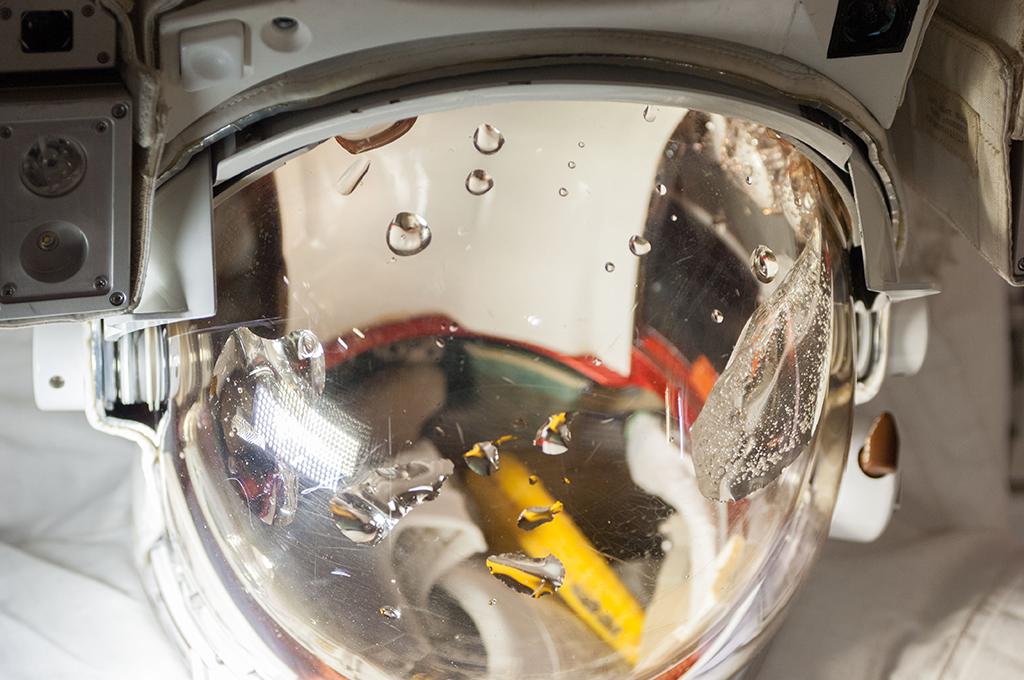
2013 July 16
During the early stage of a multitasking spacewalk, European Space Agency astronaut Luca Parmitano’s NASA spacesuit experiences a malfunction that opens a dangerous flow of water from the garment’s cooling system into his helmet. Assisted by NASA crewmate Chris Cassidy, Parmitano manages to avoid drowning by quickly returning to the ISS Quest airlock, cutting short a planned 6.5-hour spacewalk. An investigation follows, heightening the need for a new generation of U.S. spacesuits.
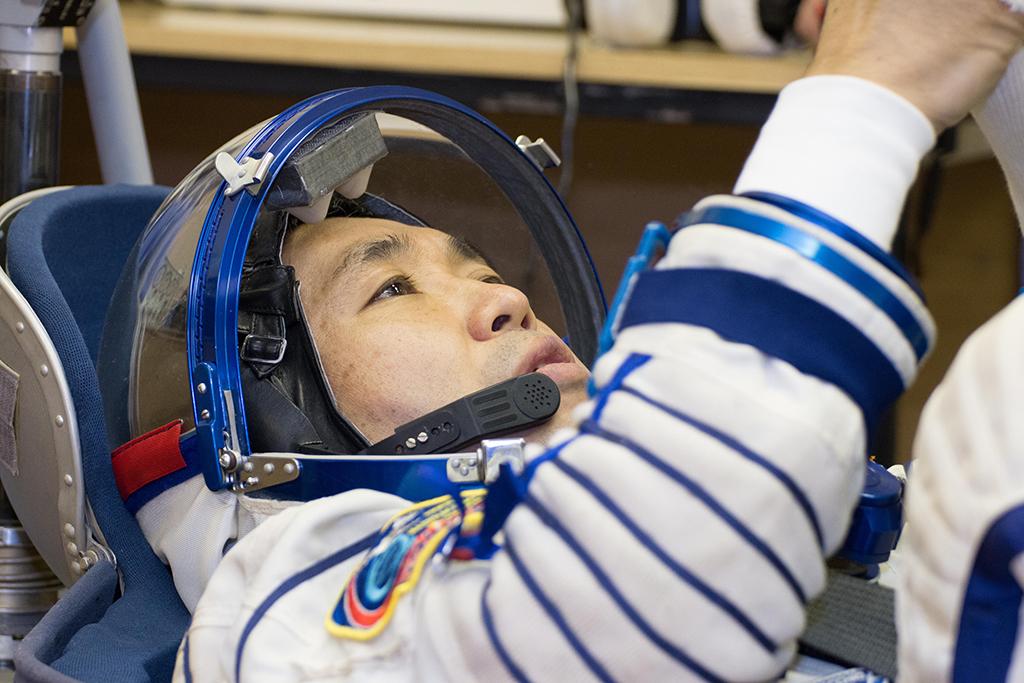
2014 March 9
Koichi Wakata becomes the first Japanese to serve as ISS commander with the start of Expedition 39.
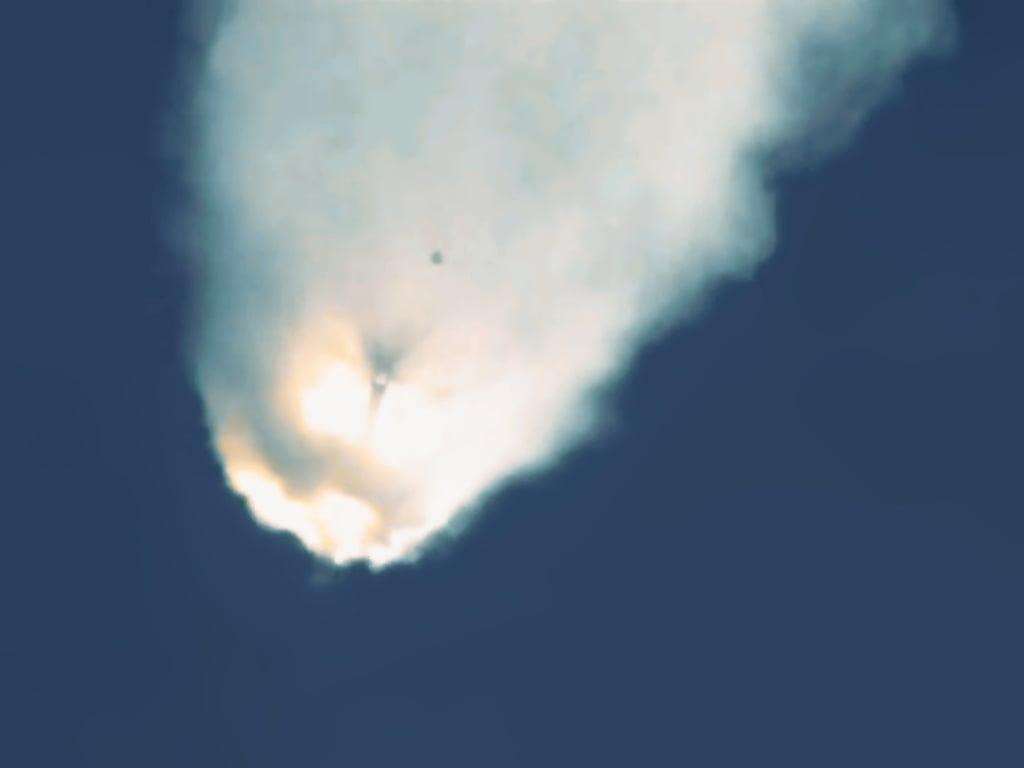
2015 June 28
On its seventh cargo run for NASA, SpaceX experiences its first and so far only inflight launch failure. Among the cargo lost is the first of two International Docking Adapters needed for upcoming U.S. Commercial Crew vehicles owned and operated by SpaceX and Boeing.
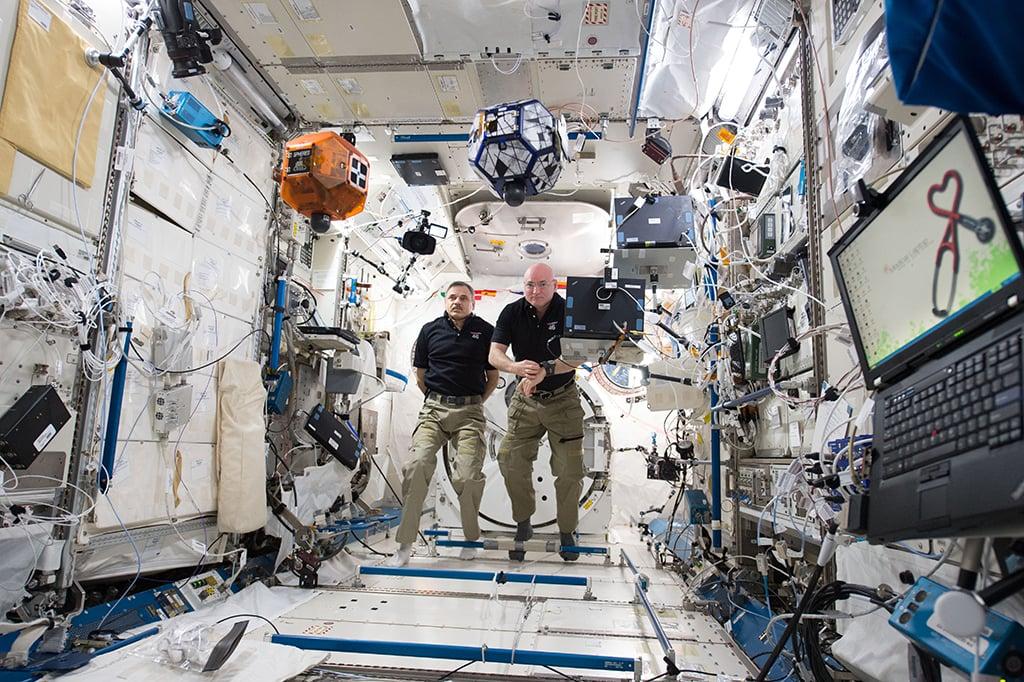
2016 March 1
NASA astronaut Scott Kelly and cosmonaut Mikhail Kornienko return to Earth from the ISS aboard the Soyuz TMA-18M capsule in remote Kazakhstan, concluding a 340-day mission, the longest ever for a U.S. astronaut. Dozens of science investigations involving Kelly and his Earth-based twin brother, Mark Kelly, also a NASA astronaut, study changes that the human body undergoes down to the genetic level in the absence of gravity.
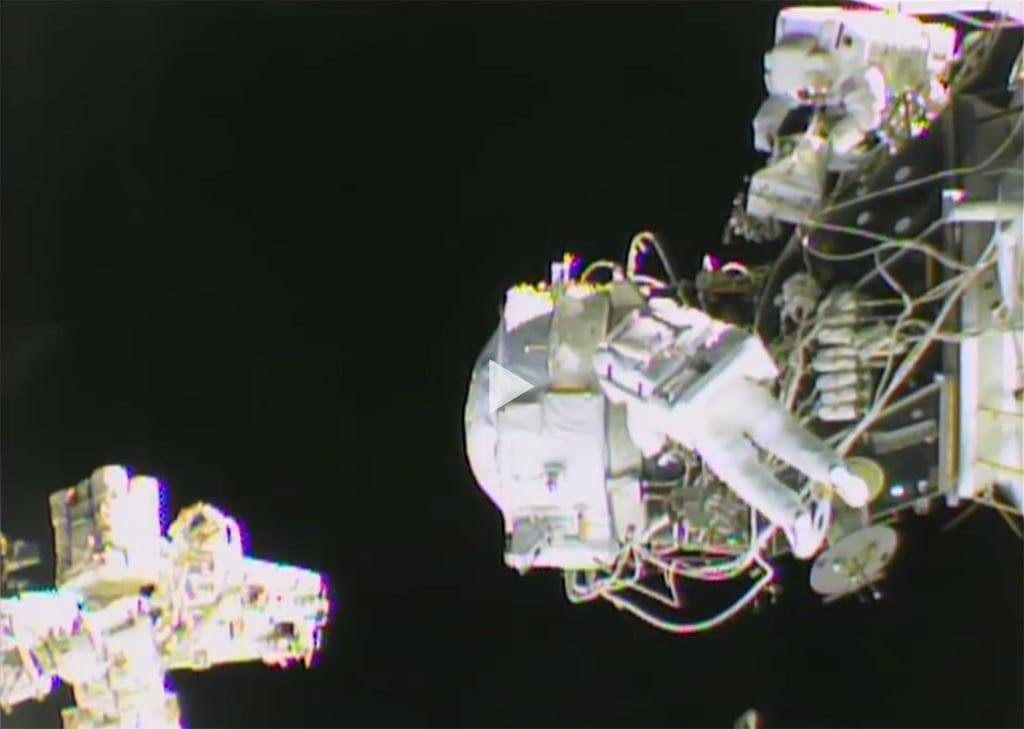
2016 Aug. 19
NASA astronauts Jeffrey Williams and Kathleen Rubins conduct a spacewalk that equips the ISS with its first International Docking Adapter (IDA) at the forward end of the Harmony module, previously the primary docking port for space shuttles. The IDA was developed to accommodate future Boeing CST-100 Starliner and SpaceX Crew Dragon capsules transporting astronauts and cosmonauts to the ISS. The IDA design is available for use on multinational spacecraft to encourage future joint operations. A second IDA is installed atop Harmony during a spacewalk by NASA astronauts Nick Hague and Andrew Morgan on Aug. 21, 2019.
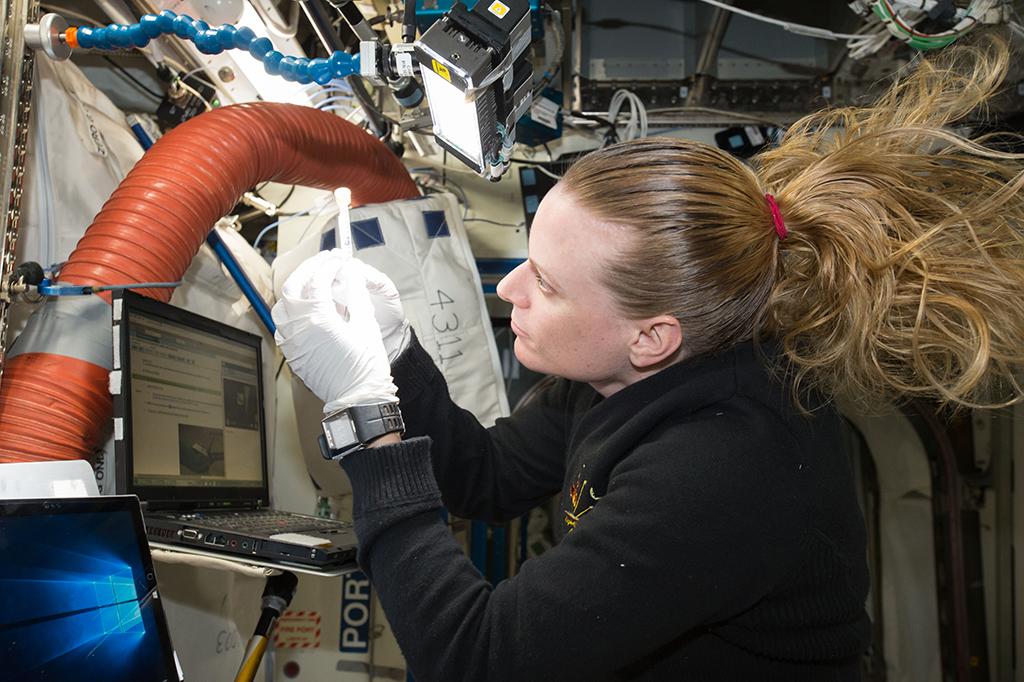
2016 Aug. 27-28
NASA astronaut Kathleen Rubins, a microbiologist, becomes the first person to sequence DNA from space as part of the Biomolecule Sequencer experiment, using mouse, virus and bacteria samples. This enables an ability to better diagnose human health issues from space and to identify the source of spacecraft contamination as well as DNA-based life forms found beyond Earth.
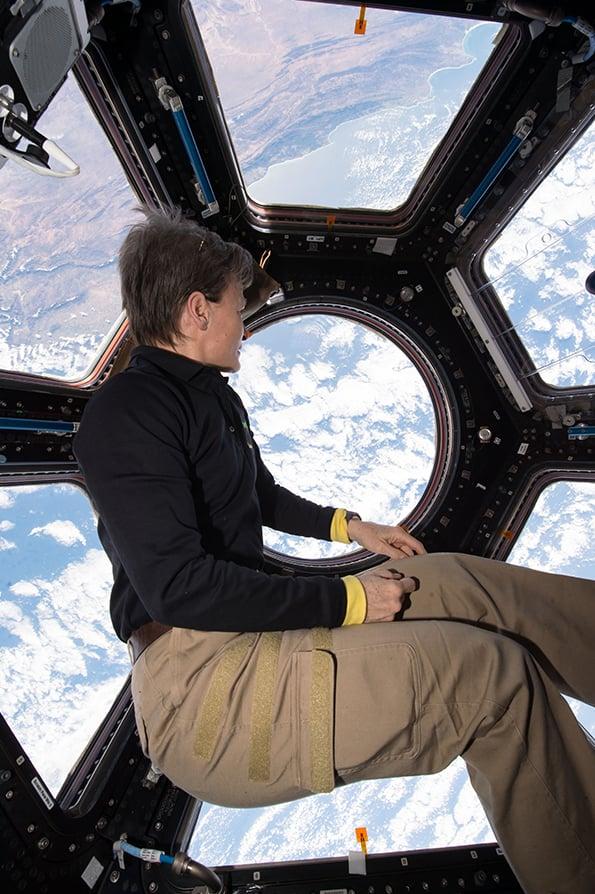
2017 Sept. 2
NASA astronaut Peggy Whitson sets a U.S. career record of 665 days in space as she concludes a 289-day mission to the ISS with a landing in Kazakhstan aboard Russia's Soyuz MS-04 with fellow U.S. astronaut Jack Fischer and cosmonaut Fyodor Yurchikhin. It is Whitson’s third trip to the station. She participates in 10 spacewalks during her time on the ISS.
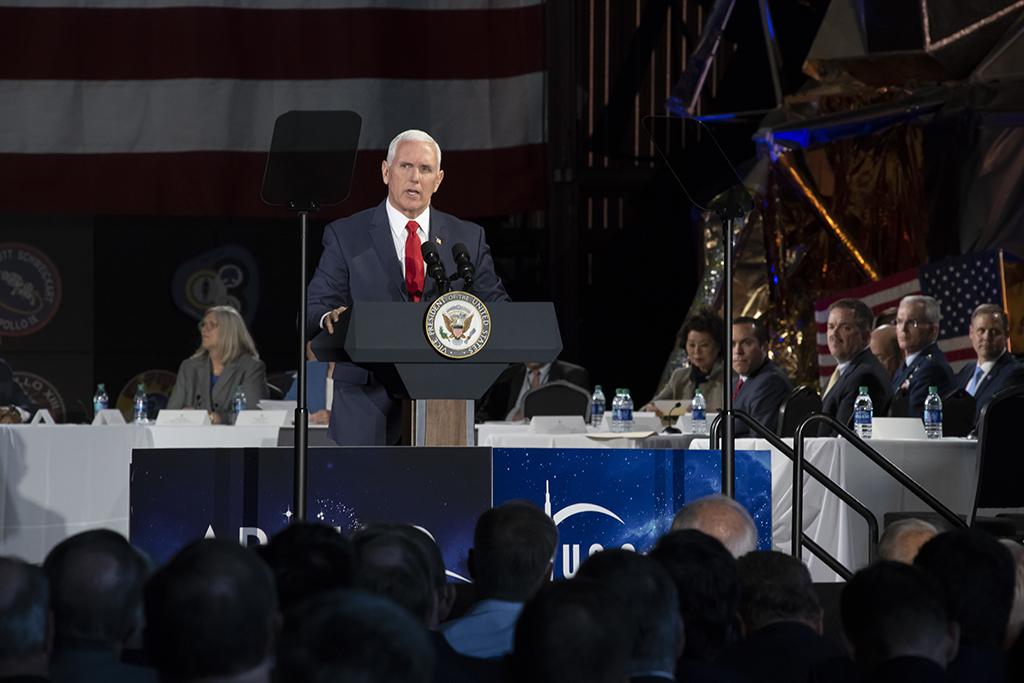
2019 March 26
Vice President Mike Pence, chair of the White House National Space Council, directs NASA to return to the surface of the Moon with astronauts in 2024, four years sooner than previously planned. The strategy calls on NASA to transition oversight of low-Earth-orbit activities such as those on the ISS to the commercial sector.
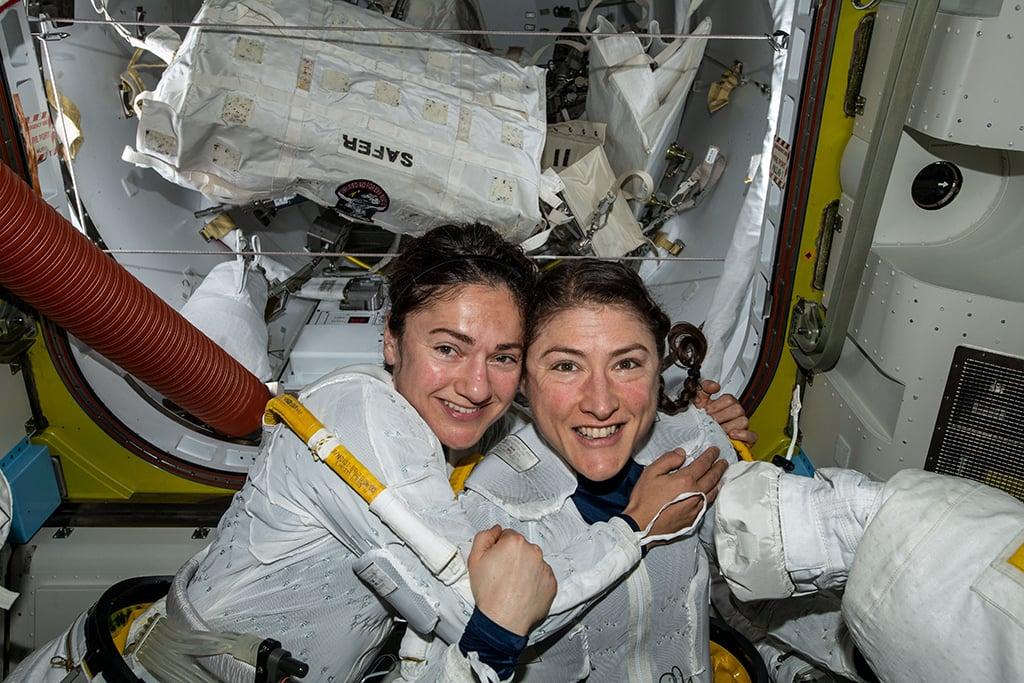
2019 Oct. 18
NASA astronauts Jessica Meir and Christina Koch conduct the first all-female spacewalk, the 221st outing devoted to the assembly and maintenance of the ISS. During 7 hr. and 17 min., the spacewalkers replace a failed battery charge-discharge unit on the solar power truss, ensuring the best possible distribution of electricity.

2019 Dec. 22
Boeing’s CST-100 Starliner ends a truncated uncrewed flight test to the ISS, Orbital Flight Test-1, with a parachute-assisted landing at the White Sands Missile Range in New Mexico. Launched on Dec. 20 as part of NASA’s Commercial Crew Program, the spacecraft soon experiences software issues that prevent it from departing its initial low-altitude orbit for the ISS. More issues surface following the two-day flight. Boeing intends to repeat OFT in January 2021 and follow up with a crewed flight test to the ISS in 2021.
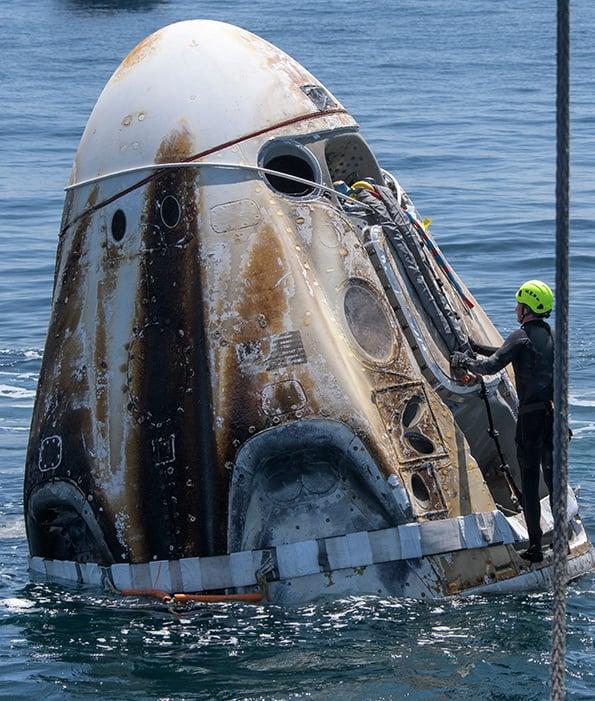
2020 May 30-Aug. 2
SpaceX carries out a NASA Commercial Crew Program flight-test certification requirement by launching its Crew Dragon with NASA astronauts Robert Behnken and Douglas Hurley to the ISS for a 64-day mission. The launch from NASA’s Kennedy Space Center is the first for U.S. astronauts from the U.S. since the shuttle fleet was retired in July 2011. The milestone sets the stage for regularly scheduled commercial crew launches to the ISS, a 10-year objective intended to end NASA’s reliance on Russia for ISS crew launches. SpaceX’s Crew 1 launch with four U.S. and Japanese astronauts is set for November.
On Nov. 2, NASA and its 14 international partners mark 20 years of continuous human presence aboard the International Space Station (ISS). Here are some of the key milestones along the way.



Comments